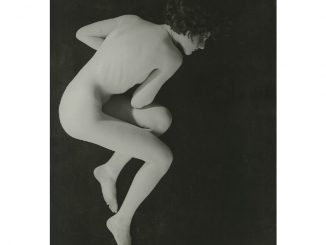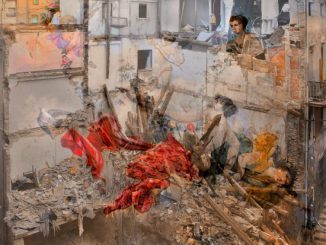
Ruth Orkin “the eternal ingenue”.
“Being a photographer makes you see things differently or maybe you become a photographer because you see things differently. “Ruth Orkin (1921-1985), an American photographer and filmmaker born in Boston, wrote.
The second part of her affirmation suited her perfectly, so much so that she was able to raise the real to grant her an haughty grace. Daughter of silent movie actress Mary Ruby and Samuel Orkin, creator of Orkin Craft toys, she grew up in Hollywood.
At the age of 10 with the “39 cent Univex” she was given as a gift, she started to photograph her friends and teachers. Later, armed with a slightly more expensive “Kodak Baby Brownie”, she continued to shoot to “tell” others what they should be looking at.
At 17 she began a long bicycle trip from Los Angeles to New York to go to the 1939 World’s Fair and came back with a report on her journey.
Appointed first runner at MGN Studios, she chronicled her work by photographing one of her colleagues in her day-to-day activities. She then moved to New York City, where she worked as a nightclub photographer, taking pictures of babies and children’s portraits, which would remain one of her favourite subjects.
She soon began to collaborate with the great magazines of the time and met many musicians, Leonard Bernstein, Isaac Stern, Aaron Copland, Jascha Kheilfitz, Serge Koussevitzky. For “Life” in 1951 she leaves for a report in Israel on the Israel Philharmonic Orchestra.
Discovering life on the Kibbutz, she stayed there for almost a year and returned via Rome, Florence, Venice, Lucerne, Paris and London, which were the source of many shots. In Florence she met an art student, Nina Lee Graig, who became the subject of one of her most famous photographs “American Girl in Italy”. And her status as a photographer is now established.
Back in New York she produced with her husband two feature films, including “Little Fugitive” but more importantly, from her apartment in Central Park, she photographed fashion shows, concerts, etc.. She produced two successful books: “Through My Window” and “More Pictures From My Window”.
She will be recognized as one of the ten best women photographers and moving from black and white to color she becomes one of the very first to give importance to such shots. She also remains one of the first photographers to show the emancipation of women through the narrative force of her shots, which make her a funny storyteller and poet of reality;
She is always capable of revealing intimate moments within the public image. There is a carefree and primal vision that makes all the charm of funny, accurate and intuitive photos that give the woman, whatever her status, an aspect – like the creator herself of “eternal ingenue”.




Be the first to comment